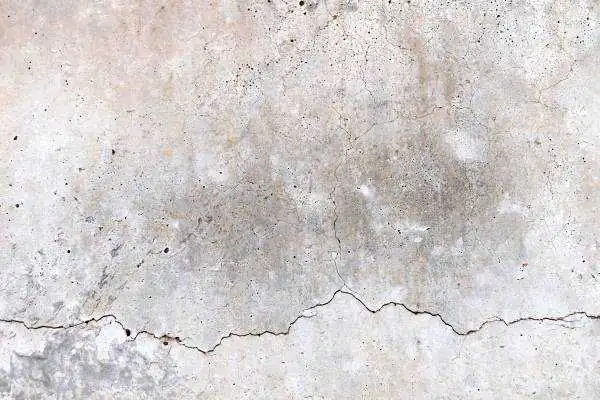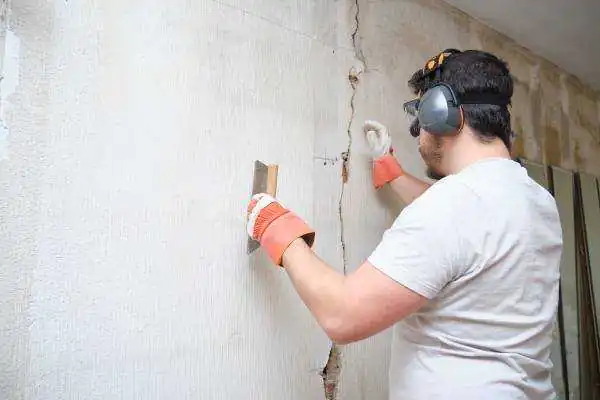Introduction
Foundation Cracks is a common issue homeowner are facing across the world. Their causes may have varied factors such as settling, soil movement, and weather conditions. These cracks can lead to serious problems if left unaddressed, including structural damage, water leaks, and even collapse. As a homeowner, it’s important to understand the causes and types of foundation cracks. As well as when to start worrying and seek professional help.
Common Causes of Foundation Cracks
- Settling: As a building settles into the ground over time, it can cause stress on the foundation, leading to cracks.
- Poor Drainage:
If water is not properly drained away from the foundation. It can seep into the soil around the foundation, causing it to expand and contract, which can result in cracks. - Freeze-Thaw Cycles:
When water freezes and thaws repeatedly, it can cause the soil to shift. This can also cause cracks in the foundation. - Soil Type: Different soil types can contribute to foundation cracks. For instance, expansive clay soil can cause the foundation to heave and crack. On the other hand, sandy soil can lead to settling and shifting.
It’s important to understand the underlying causes of foundation cracks so that you can take the necessary steps to prevent them from happening in the first place, or address them promptly if they do occur.

Types of Foundation Cracks
- Horizontal Cracks: These cracks run parallel to the ground and can be a sign of serious structural damage. Lateral pressure from the soil or by water damage can cause this type of foundation damage.
- Vertical Cracks: These cracks run straight up and down and are typically less serious than horizontal cracks. The underlying cause may be settling or the natural curing process of the concrete.
- Diagonal Cracks: These cracks run at an angle and may be a sign of serious structural damage. Causes may include foundation settling or by soil movement.
- Stair-Step Cracks: These cracks resemble a flight of stairs and are typically seen in block or brick foundations. Causes may include settlement or soil pressure.
It’s important to note that the appearance of cracks alone may not necessarily indicate the severity of the damage. It’s important to have a professional assess the situation to determine the underlying cause and the appropriate course of action.

When to Start Worrying about cracks in your foundation
When it comes to foundation cracks, it’s important to know when to start worrying and take action. Some cracks may be minor and repairs may be simple, while others may be a sign of serious structural damage that requires immediate attention.
One of the most obvious signs that foundation cracks are a serious problem is if the cracks are large or rapidly growing. If you notice cracks that are wider than 1/4 inch, it’s important to take action, as these may be a sign of serious structural damage. Cracks that continue to grow over time can also be a sign of a serious problem. The owner should address them urgently and seek help from professionals.
Another sign that you should start worrying about foundation cracks is if you notice other symptoms of foundation damage, such as sagging floors, sticking doors and windows, or bowing walls. These symptoms may be indicative of a larger problem, and require immediate attention.
If you notice any of these signs, it’s important to call in a professional to assess the situation. A professional will be able to determine the underlying cause of the cracks and recommend the appropriate course of action. In general, if cracks are more than 1/4 inch wide, it’s best to call in a professional, as these may be a sign of serious structural damage.
Ultimately, the key to preventing serious foundation damage is to catch the problem early and address it promptly. By monitoring your foundation for signs of cracks and other symptoms of damage, you can help prevent minor problems from turning into major structural issues.

Preventing Foundation Cracks
Preventing cracks in your foundation is much easier than repairing them. While it may be impossible to completely eliminate the risk of foundation cracks. There are several steps that homeowners can take to reduce the likelihood of damage.
One of the most important things you can do to prevent foundation cracks is to maintain proper drainage. Water is one of the biggest culprits of foundation damage, as it can seep into the soil around the foundation and cause it to expand and contract. To prevent this, make sure that water is properly diverted away from the foundation. This can involve installing gutters and downspouts, and ensuring that they are clear of debris. It’s also important to make sure that the soil around the foundation slopes away from the house. So that water does not pool around the foundation.
Another way to prevent future complications is to avoid overwatering plants near the foundation. When you water plants, the soil around the plants can become saturated, which can lead to soil movement and foundation damage. To prevent this, make sure to water plants sparingly and avoid watering them too close to the foundation.
In addition to these steps, it’s also important to ensure that the foundation is properly constructed and maintained. This includes ensuring that the foundation is properly reinforced, and that any cracks or damage are promptly repaired. It’s also important to avoid adding too much weight to the foundation, as this can cause it to crack or settle over time.
By taking these steps, homeowners can help prevent foundation cracks and reduce the risk of serious structural damage. If you do notice any signs of foundation damage, such as cracks or other symptoms, it’s important to call in a professional to assess the situation and recommend the appropriate course of action.
Conclusion
Cracks in foundations are a common problem and there are various factors that cause them. There are different types, and their severity and sizes differ. Some require minor repairs and on the other side of the spectrum, more serious damage will require more urgent attention.
In conclusion, monitoring foundation cracks and addressing them promptly is essential to prevent further damage. If you notice any signs of foundation damage, it’s important to call in a professional to assess the situation and recommend the appropriate course of action. By taking steps to prevent foundation cracks and promptly addressing any damage, homeowners can protect their homes and ensure the safety of their families.






